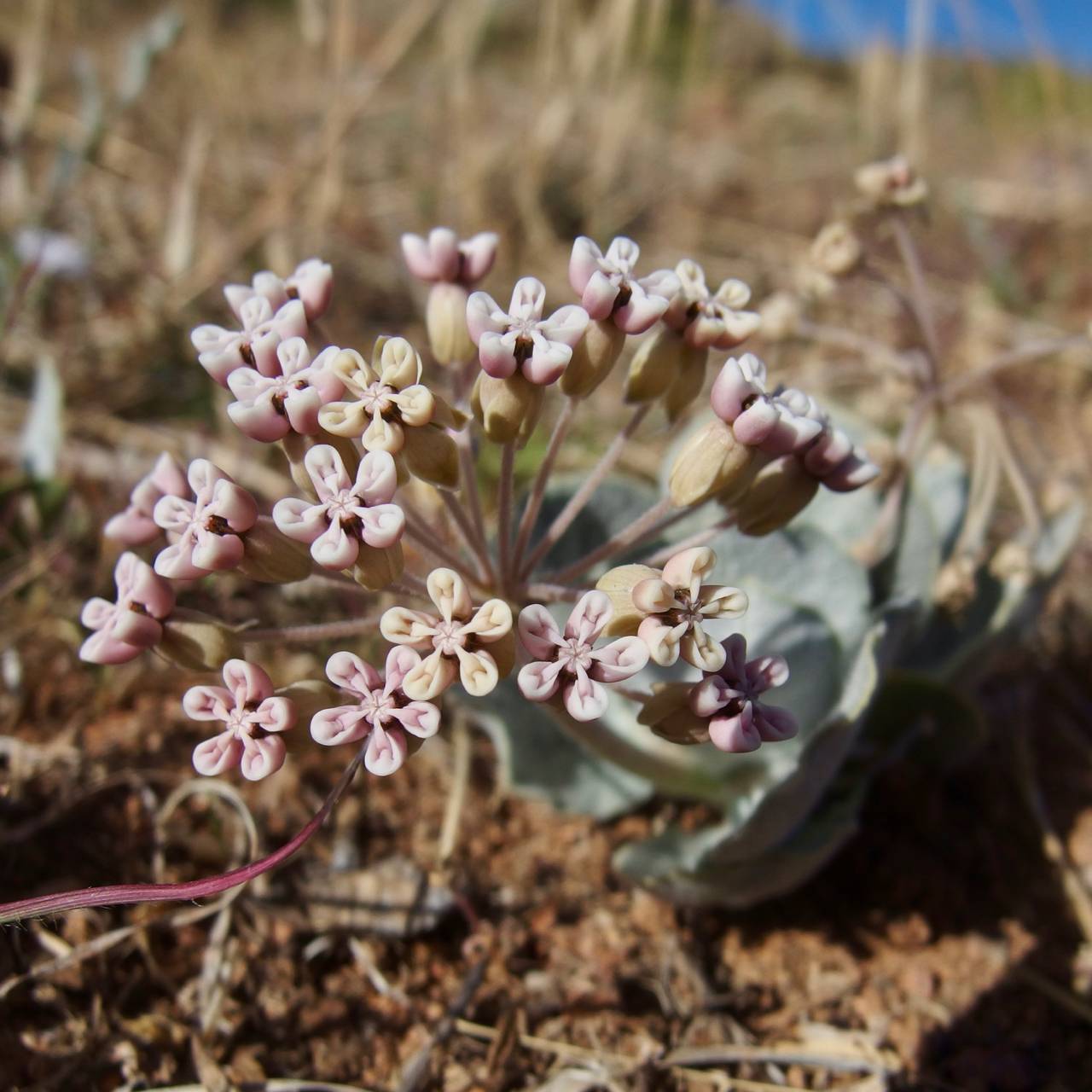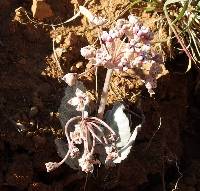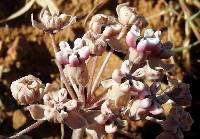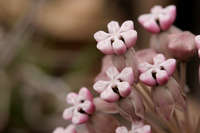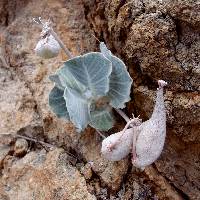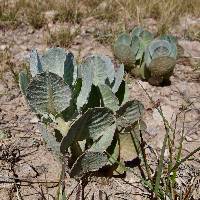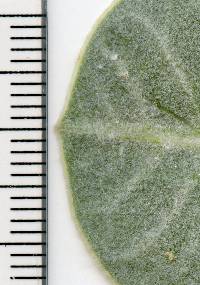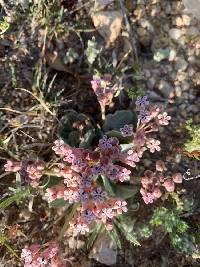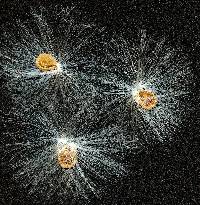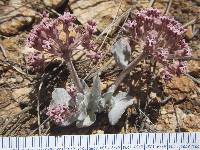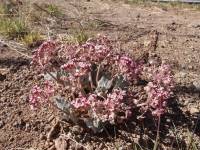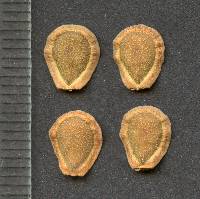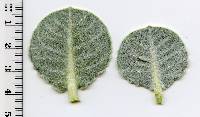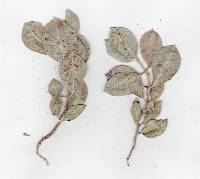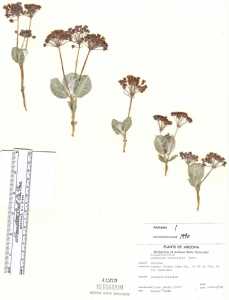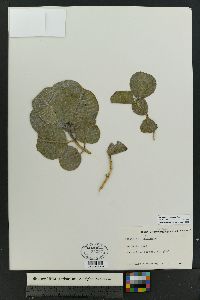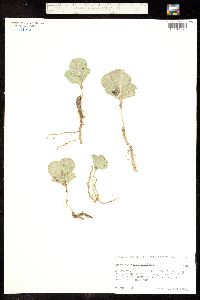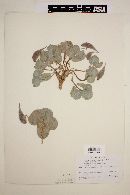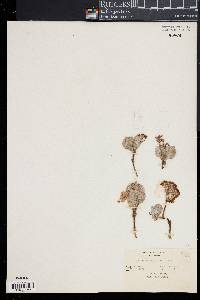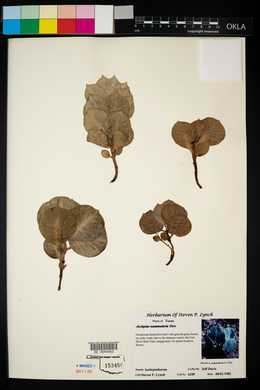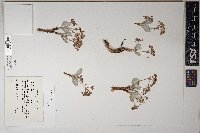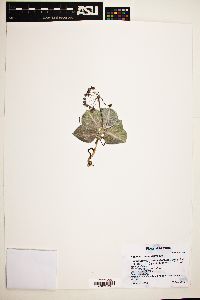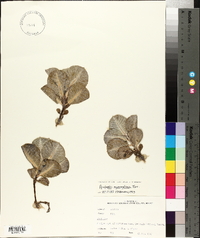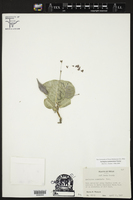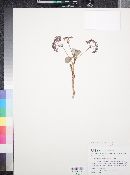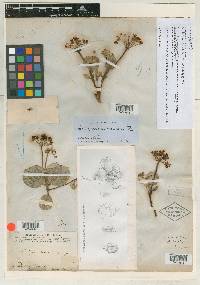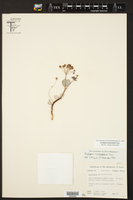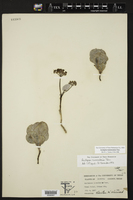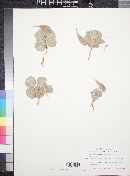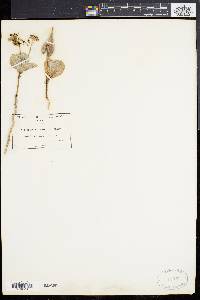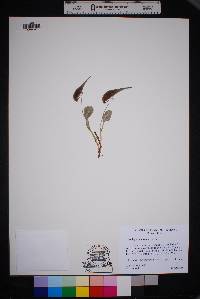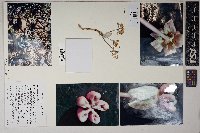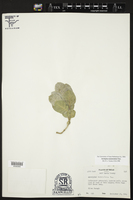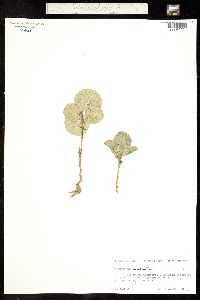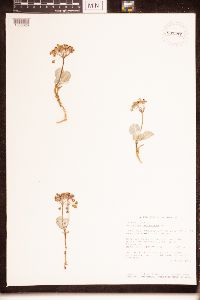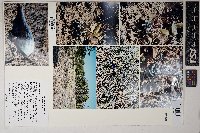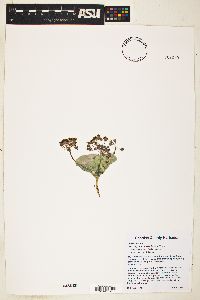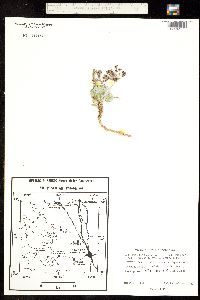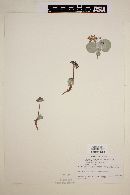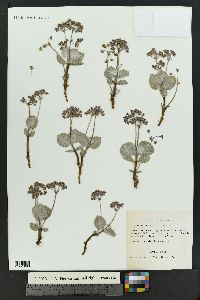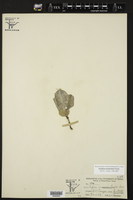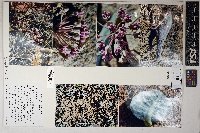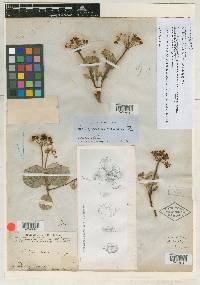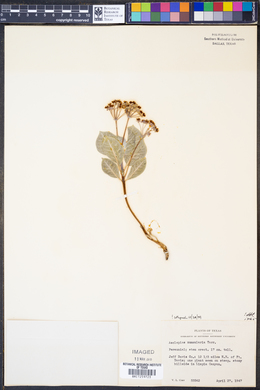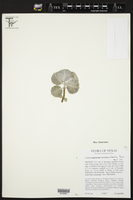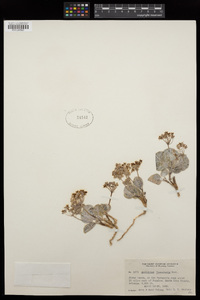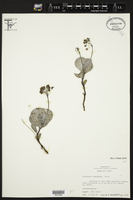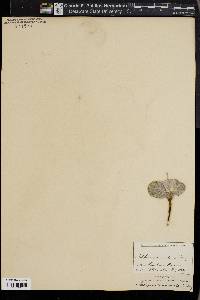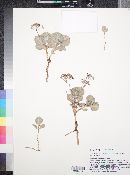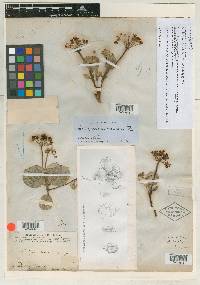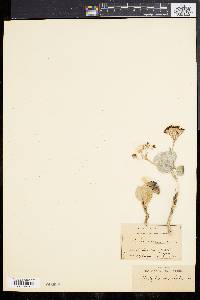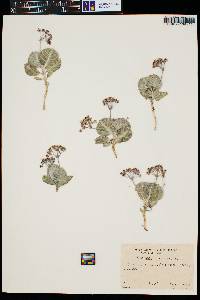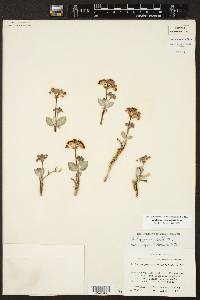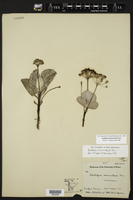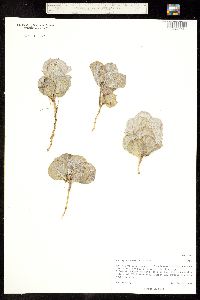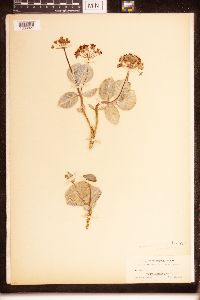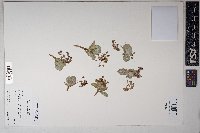
|
|
|
|
Family: Apocynaceae
Tufted Milkweed, more... (es: talayote)
|
Plant: perennial herb, diminutive, densely to sparingly wooly, the plant above ground level 3-12 cm tall; stems one to several from the base, erect or ascending Leaves: opposite, the petioles 1-7 mm long, the blades circular to broadly elliptic, 1.5-5 cm long, 1-5.5 cm broad, obtuse, rounded or subcordate at the base, obtuse to rounded or truncate at the apex, apiculate INFLORESCENCE: UMBELS lateral but overtopping the leaves and appearing terminal, 3-5 cm broad, the peduncles 2-8 cm long Flowers: small; calyx lobes 2-3 mm long; corolla purple-pink, the lobes 4-6 mm long; hoods pinkish to yellowish, erect-ascending, obovoid-triangular, widening upward to a truncate apex, 2.2-3 mm long along the dorsal surface, 1.6-2.2 mm broad at the top, about as long as the gynostegium, the horns radially flat, variably attached from the lower to the upper portion of the hoods, triangular to sickle-shaped, abruptly incurved and exserted ca. 1 mm; anther wings 1-1.2 mm long; corpusculum 0.2-0.3 mm long, the pollinia 0.5-0.6 mm long Fruit: FOLLICLES erect on deflexed pedicels, 4-6 cm long Misc: Oak and conifer woodlands, grasslands; 1200-1600 m (4000-5200 ft); Mar-May REFERENCES: Sundell, Eric. 1994. Asclepiadaceae. J. Ariz. - Nev. Acad. Sci. Volume 27, 169-187. Sundell 1993, Woodson 1954, Kearney and Peebles 1969, Nabhan et al 2015 Duration: Perennial Nativity: Native Lifeform: Forb/Herb General: Low growing and diminutive herbaceous perennials generally 12 cm tall or less, stems 1-several from the base, erect to ascending, herbage lanate-tomentose, at least when young, plants sometimes appearing to have no stem, however the peduncles are often much longer than the leaves. Leaves: Opposite, in 2-4 pairs, broadly ovate to suborbicular, 1.5-5 cm long, usually wider than long, tips rounded and apiculate, bases rounded to subcordate, often crowded near the base of the stems. Flowers: Small, corolla lobes purplish-pink, 4-6 mm long, calyx lobes 2-3 mm long, hoods pinkish to yellowish, erect to ascending, obovoid-triangular, widening upward to a truncate apex, 2-3 mm long along the dorsal surface, 1.5-2 mm broad at the top, crested within a horn-like appendage, the horns radially flat, variably attached from the lower to the upper portion of the hoods, triangular to sickle-shaped, abruptly incurved and exserted ca. 1 mm, usually reflexed in anthesis, flowers borne in lateral umbels, these sometimes over topping the leaves and appearing terminal. Fruits: Ovoid, lanceolate, or fusiform follicles, 4-6 cm long, these erect on deflexed pedicels. Ecology: Found on dry mesas and slopes, grasslands, oak and conifer woodlands, from 3,000-5,000 ft (914-1524 m); flowering March-June. Distribution: Limited to the Big Bend region and into southeastern Arizona, then into the Mexican Highlands. Notes: This species is similar to Asclepias cryptoceras, look to the short stems generally less than 10 cm tall, with the leaves crowded towards the base of the stems, along with the purplish corolla lobes in A. nummularia to distinguish this species. A. cryptoceras has stems 15-20 cm long, with leaves all along the stems and yellowish corolla lobes. Ethnobotany: There is no specific use recorded for the species, but an infusion of the roots of the genus was used to treat epilepsy, kidney trouble, syphilis, and Bright's disease, the gum of the plant was used for insect stings, and the leaves used for stomach pains. The seeds were ground into flour, and the leaves and young plants were used as greens. Etymology: Asclepias is named for the Greek God of healing Asklepios, while nummularia means resembling a coin, nummus, often applied to plants with small, almost circular leaves. Synonyms: None Editor: LCrumbacher 2011, SBuckley 2014, AHazelton 2015 |
|
|
|
This project was made possible in part by the Institute of Museum and Library Services [MG-70-19-0057-19].
Powered by Symbiota

